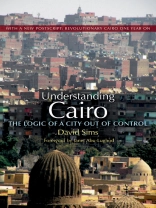This book moves beyond superficial generalizations about Cairo as a chaotic metropolis in the developing world into an analysis of the ways the city’s eighteen million inhabitants have, in the face of a largely neglectful government, built and shaped their own city. Using a wealth of recent studies on Greater Cairo and a deep reading of informal urban processes, the city and its recent history are portrayed and mapped: the huge, spontaneous neighborhoods; housing; traffic and transport; city government; and its people and their enterprises.
The book argues that understanding a city such as Cairo is not a daunting task as long as pre-conceived notions are discarded and care is taken to apprehend available information and to assess it with a critical eye. In the case of Cairo, this approach leads to a conclusion that the city can be considered a kind of success story, in spite of everything.
विषयसूची
List of Maps
List of Illustrations
List of Tables
Abbreviations and Acronyms
Acknowledgments
Foreword Janet Abu-Lughod
Introduction
1. Imaging Cairo
2. Cairo is Egypt and Egypt is Cairo
3. A History of Modern Cairo: Three Cities in One
4. Informal Cairo Triumphant
5. Housing Real and Speculative
6. The Desert City Today
7. Working in the City
8. City on the Move: A Complementary Informality?
9. Governing Cairo
10. Summing Up: Cairo Serendipity?
Postscript: Revolutionary Cairo One Year On
Notes
Glossary
Bibliography
Index
लेखक के बारे में
David Sims is an American economist and urban planner who has led a number of studies about Cairo’s urban development and housing.












